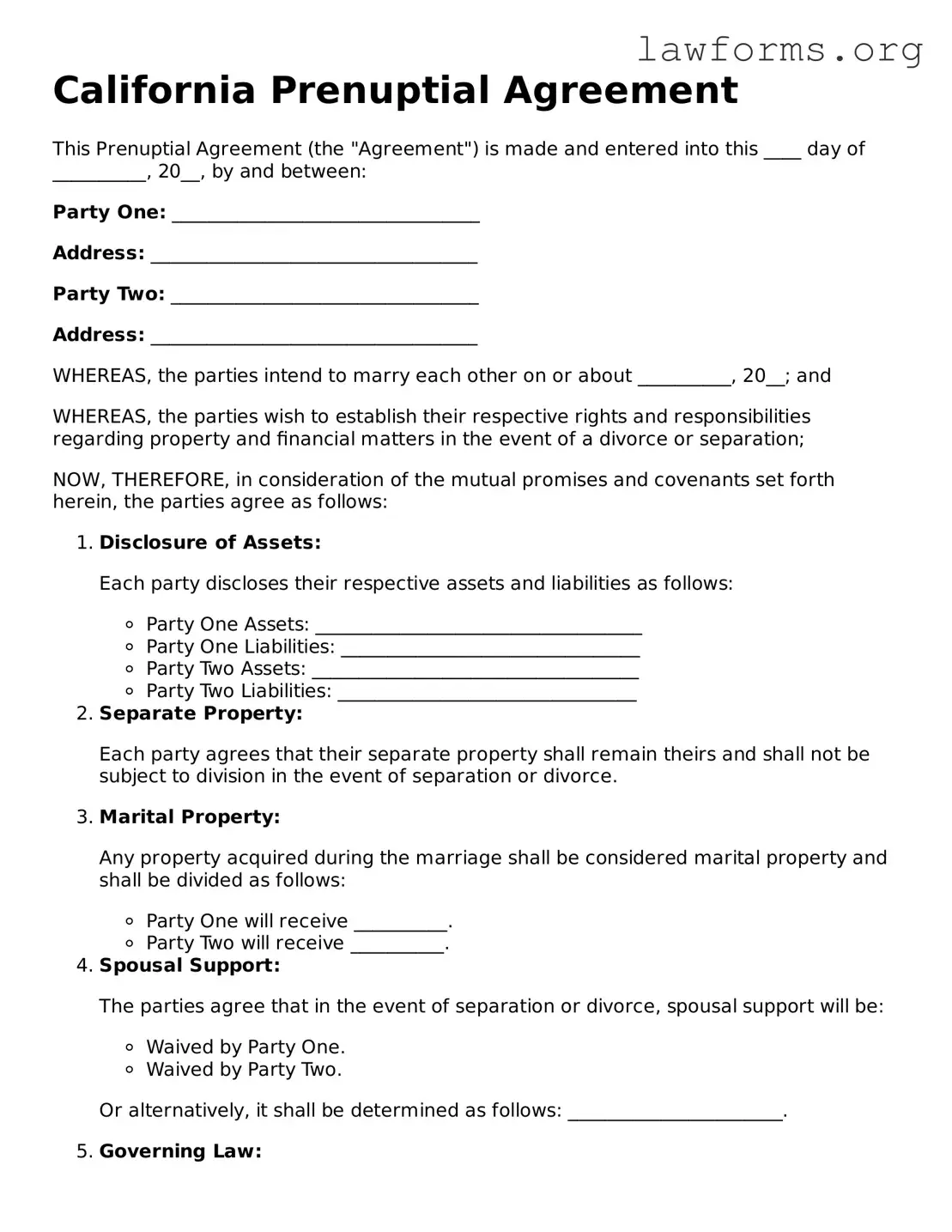California Prenuptial Agreement
This Prenuptial Agreement (the "Agreement") is made and entered into this ____ day of __________, 20__, by and between:
Party One: _________________________________
Address: ___________________________________
Party Two: _________________________________
Address: ___________________________________
WHEREAS, the parties intend to marry each other on or about __________, 20__; and
WHEREAS, the parties wish to establish their respective rights and responsibilities regarding property and financial matters in the event of a divorce or separation;
NOW, THEREFORE, in consideration of the mutual promises and covenants set forth herein, the parties agree as follows:
- Disclosure of Assets:
Each party discloses their respective assets and liabilities as follows:
- Party One Assets: ___________________________________
- Party One Liabilities: ________________________________
- Party Two Assets: ___________________________________
- Party Two Liabilities: ________________________________
- Separate Property:
Each party agrees that their separate property shall remain theirs and shall not be subject to division in the event of separation or divorce.
- Marital Property:
Any property acquired during the marriage shall be considered marital property and shall be divided as follows:
- Party One will receive __________.
- Party Two will receive __________.
- Spousal Support:
The parties agree that in the event of separation or divorce, spousal support will be:
- Waived by Party One.
- Waived by Party Two.
Or alternatively, it shall be determined as follows: _______________________.
- Governing Law:
This Agreement shall be governed by, and construed in accordance with, the laws of the State of California.
- Amendment:
This Agreement may only be amended in writing and signed by both parties.
- Severability:
If any provision of this Agreement is found to be invalid or unenforceable, the remaining provisions shall remain in effect.
IN WITNESS WHEREOF, the parties hereto have executed this California Prenuptial Agreement on the date first above written.
_______________________________
Party One
_______________________________
Party Two
_______________________________
Date
